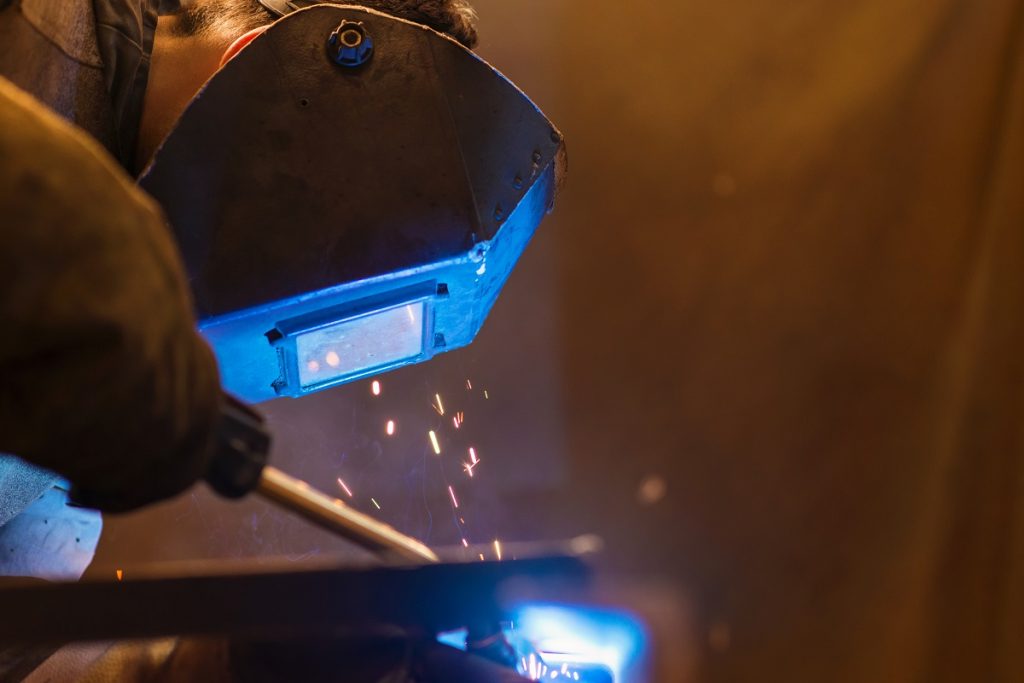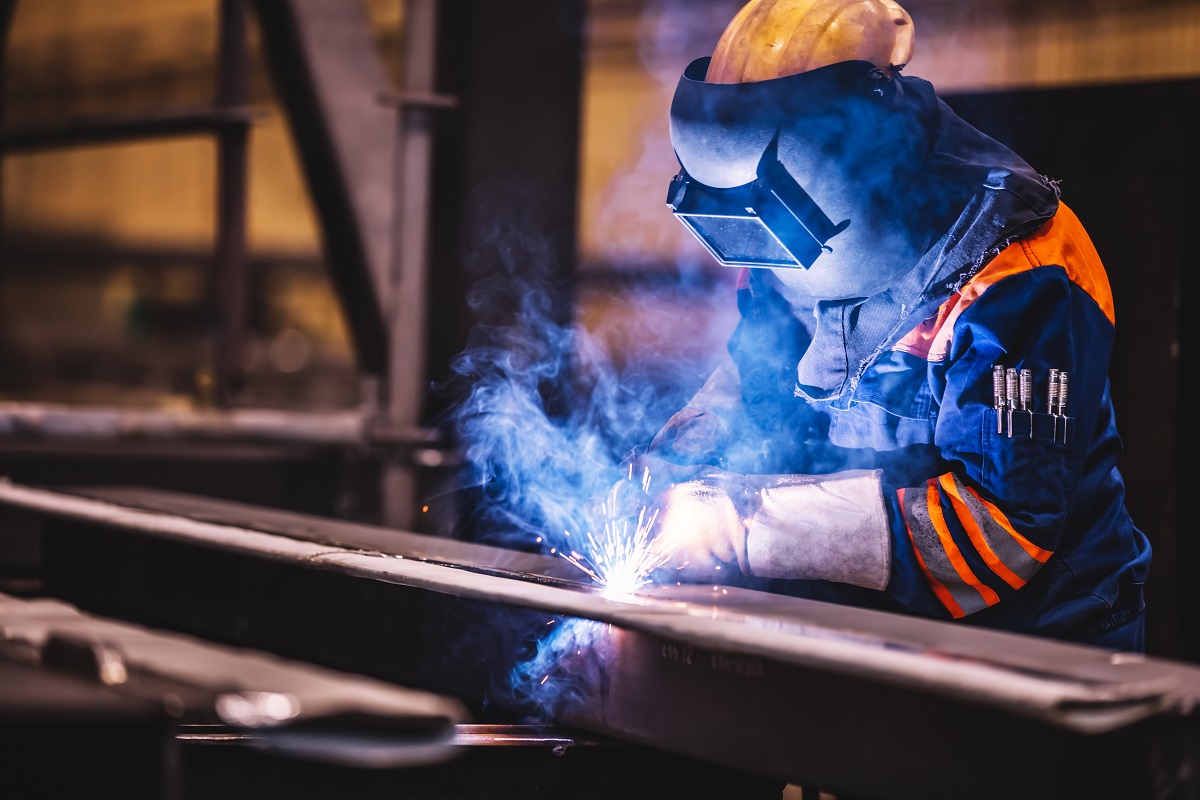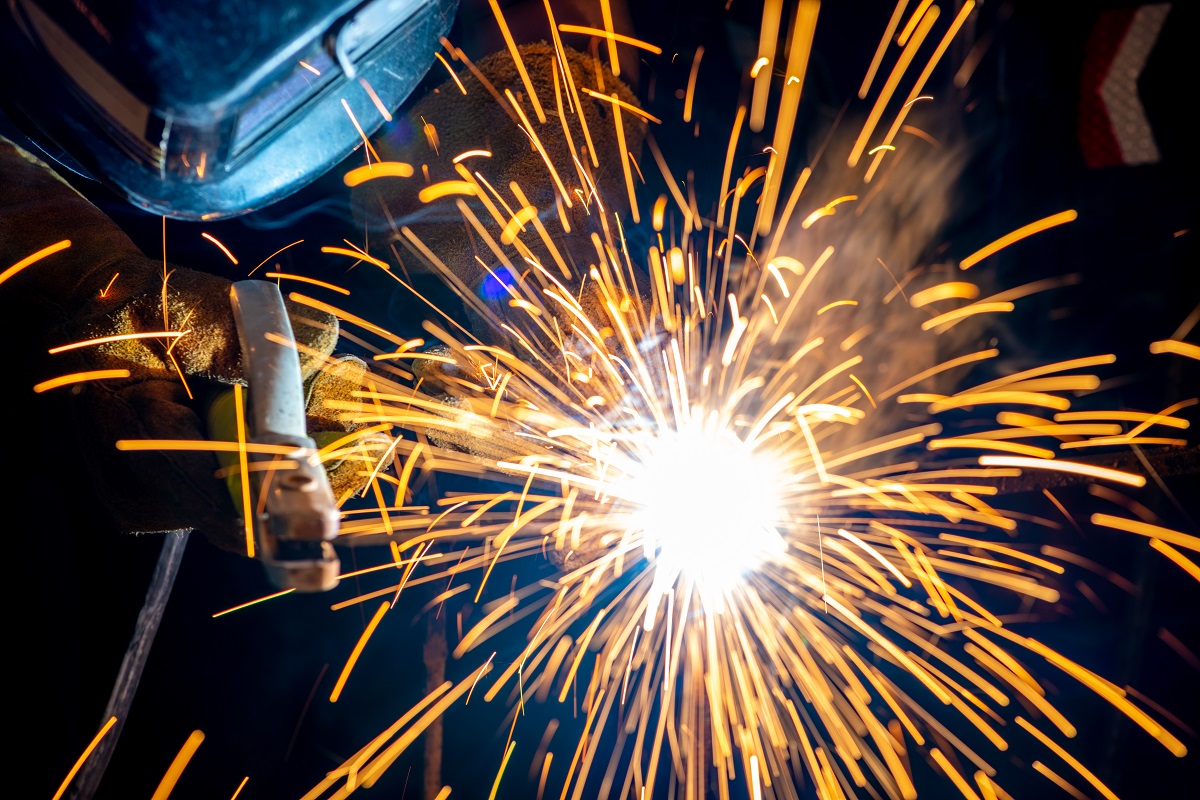Steel Fastening: The Difference Between Welding and Riveting

What is the difference between welding and riveting?
- Permanence
- Rigidness
- Additional Parts
- Accessibility
- Heating and Expansion
- Difficulty
Fastening steel parts together is essential in metalworking or most other projects involving metal. Metalworkers can do this in two main ways: welding and riveting. To figure out which method you should use, you should first know the difference between welding and riveting.
The process of welding involves both heat and pressure to successfully join two metals together. An understanding of the metals’ physical and atomic structures is needed. On the other hand, riveting fastens two metals together by using rivets. Keep reading to learn more about their differences!
Permanence

In general, welding is a more permanent fastening method than riveting. It changes the physical state of the metals during the process, making the joint permanently fused. Riveting metals together is semi-permanent. As long as the rivets are intact and in good condition, the metals stay together. However, if anything happens that dislodges the rivets, then the joint will be broken.
Riveted joints can be removed with physical force, while well-welded joints need a lot more than that. If you’re going for a more permanent fusion for your metals, then welding is the way to go.
Rigidness
Fastening steel together sometimes needs strength and sometimes flexibility. If you choose to weld them, then you will get a rigid joint. It is stronger than a riveted joint, but can’t be manipulated anymore. Meanwhile, riveting doesn’t make a rigid joint but makes a generally weaker joint than welding.
For metal fusion that needs more rigidness, welding is the answer.
Vibrations are a different story. A welded joint can fail because of strong vibrations, while riveted joints stay intact. If you anticipate your structure to withstand vibrations, consider this.
Additional Parts

While both welding and riveting can effectively fasten metal together, their processes are very different. Welding only uses a filler material to bind the metals together, but it is still a direct fusion. It doesn’t need to add any significant parts to the entire assembly, and it fuses the metals well.
Riveting uses rivets, as the name suggests. The addition of rivets to the assembly will add more weight. If you work with metal, you have to remember that to avoid any unfortunate incidents. Don’t discount the weight of the rivets for the safety of everyone. If the project is big, then the combined weight of all the rivets that you add will affect the whole structure.
Accessibility
When fastening metals together, you need to consider the accessibility of everything. The workers who will do the actual work of fusing the metals should have enough access to the parts. Things would be easier if you’re fusing two loose pieces of metal in a workshop, but what if the situation is different? This is another advantage that welding has over riveting.
Welding can be done on virtually any part of the structure. You can weld metals together even if you have only access to the outside, like pipes. There are even ways to do this underwater. But for riveting, you need to have some clearance between the metals to fasten them, and you need to be able to access both sides.
If you’re fusing metals in tight spaces, maybe welding is the way to go. If you have access to both sides, try riveting to avoid any damage to the metal itself.
Heating and Expansion

Even though there are many advantages to the welding process, the heating and changes it does to the metals also have their disadvantages. Welded metals are vulnerable to thermal expansion which will add internal stress to the joint. Riveting has no such problems.
The heating involved in welding can also damage the metal’s cells, which affects its overall integrity. Again, riveting can fasten metals without heat, so it doesn’t damage the metal’s cells.
Difficulty
Fastening metals through welding is easier to do than riveting for existing structures. Its requirements of accessibility mean that not much change has to be made to existing structures. Considering the clearance and additional parts of riveting, more adjustments need to happen for metal structures.
You can also fasten two different metals with riveting, unlike welding. You’d need certain metals to weld them well together and make a strong joint.
Welding also takes less time than riveting. You need to drill the holes, insert rivets, heat the protruding end, then upset them for riveting. These take more time than the setup of the welding process.
Key Takeaway
There are more steel fastening methods than the two discussed in this article, but these two are among the most reliable. By knowing the difference between welding and riveting, you’d be more equipped to decide what’s best for your project.
If you plan to weld or rivet metals together, then you’ll need the best material you can find. Metal Exponents has been supplying the finest steel to our clients for more than 40 years. To get the best steel, just send us a message here!


